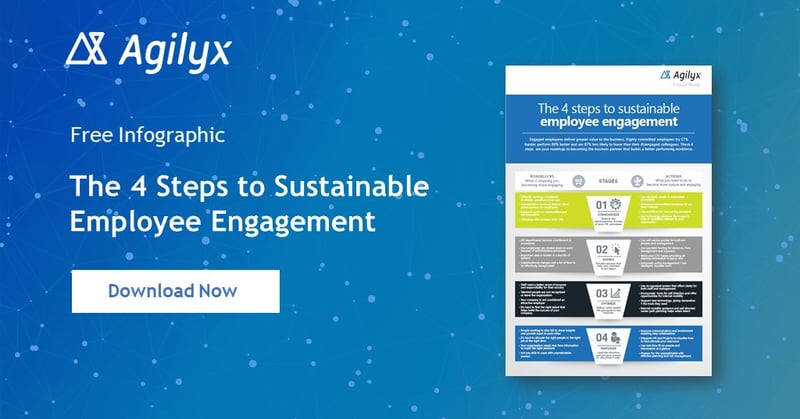Many business leaders are wrongly dismissing employee engagement as a trend that will fade away in a few years’ time. They consider an intermittent free lunch or team building day to be sufficient despite the low return on investment and high associated costs.
Truly engaging your employees is much more complex than simply offering these occasional perks and, if approached correctly, can do wonders for your retention, productivity and bottom-line results. As a leader of your company, you should consider how you can positively affect your employee engagement to keep your people happy and transform your bottom line.
How Low Employee Engagement Damages your Organisation
Are you aware of how many of your employees are engaged at work and truly motivated to be there? According to recent research from the State of the American Workplace report, only 30 percent of workers are engaged in and excited about their work, 50 percent consider themselves merely present at work and the remaining 20 percent reported feeling actively disengaged. These are alarming statistics that showcase that only a minority of employees are motivated, excited and happy to work when walking into the workplace.
What are the implications of this trend in the workforce? One recent study shows that each disengaged employee costs the company 34% of their salary due to lost productivity, missed days, chronic tardiness and disrupting others through negative attitudes. Additionally, the monetary and organisation-wide consequences caused by turnover are immense; both the hard costs of recruiting and onboarding new staff members, as well as the soft costs of lost knowledge and decreased reputation as an employer.
Feeling appreciated through merit-based pay increases is a significant element of engagement, even though pay isn’t the primary reason employees leave a company. Employees who stay with their current employer can typically expect a pay increase of only 3 percent or less, according to ERE Media. When they seek out other companies that offer a jump of 20 percent or more for their skills and experience, they tend to move on to these opportunities in part due to the idea that they would feel more valued elsewhere.
What Causes Low Employee Engagement?
Two critical issues drive low employee engagement:
- Quality of management
- Design of the job itself
Although top performers may be awarded with management roles based on their work and time investment at a company, that does not necessarily mean they have the skills required for high-quality leadership. Successful companies take a different approach and place employees into management roles only when they have the unique set of skills required for the position.
Additionally, poor job design can be a major factor in low employee engagement. Back in the times of the Industrial Revolution, work responsibilities tended to be broken down into simple, repetitive elements and workers eventually became quick experts at their tasks. These efficiency techniques are still used today in not just manufacturing, but also call centre, administrative and retail jobs. These positions rely on employees repeating the same tasks over and over again, leading to low levels of engagement.
So, what can we do to reverse this trend? Research has shown that employee engagement can be increased by automating and/or eliminating this repetitive work. A common strategy companies are adopting these days is incorporating technology into their organisation in order to effectively automate, decrease or outright eliminate administrative tasks. By utilising this technology and transforming your system, your employees can possess higher levels of autonomy, task significance and feedback, making them happier in their work.
Steps to Create an Engaged Workforce
Your organisation must completely transform if you want lasting success in the employee engagement arena; you can’t just expect things to change by adding in a perk here and there. You must truly care for your employees and give them a valuable work experience day-in and day-out, ensuring they know they’re doing something meaningful, can interact with leadership and feel like a significant contributor to the company’s success. After all, people yearn for meaning and they particularly need it at work, where they spend at least 8 hours a day.
Hire excellent managers and give your employees confidence that their leaders are knowledgeable and fair in their decision-making process. Focus on essential features of the corporate culture – ensure your employee’s roles are clearly defined and they understand why their work matters, develop a culture of transparent communication at all levels and design jobs that encourage innovation in part by eliminating rote, repetitive tasks in favour of creative, thoughtful activities that make their work meaningful.
Low employee engagement doesn’t have to be a “part of doing business”. As discussed, it’s critical to find the right technology that frees up your team to exercise more critical thinking and truly enjoy their work. Give your people the tools and support to become fully engaged in their daily responsibilities and watch your organisation blossom, and your bottom line soar.
At Agilyx, we have created a model that outlines and describes the steps HR leaders can follow to leverage technology and gain sustainable and scalable employee engagement. Check it out through the link below!





